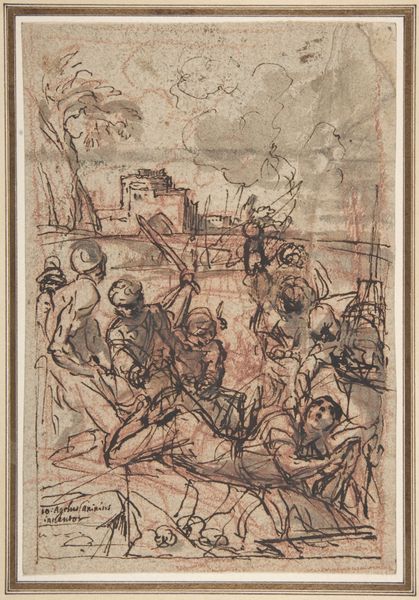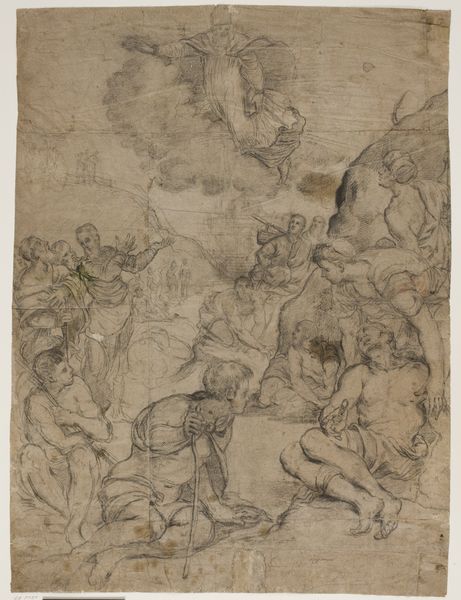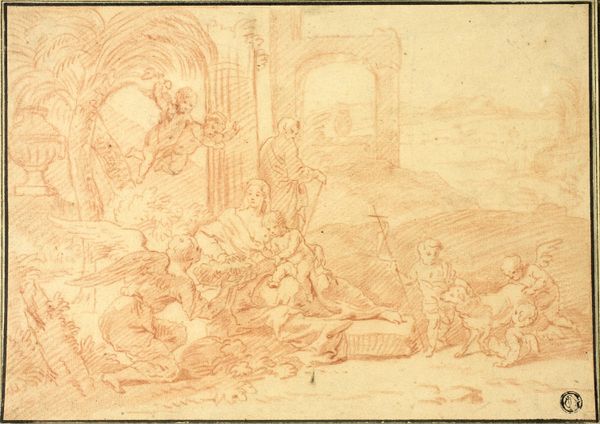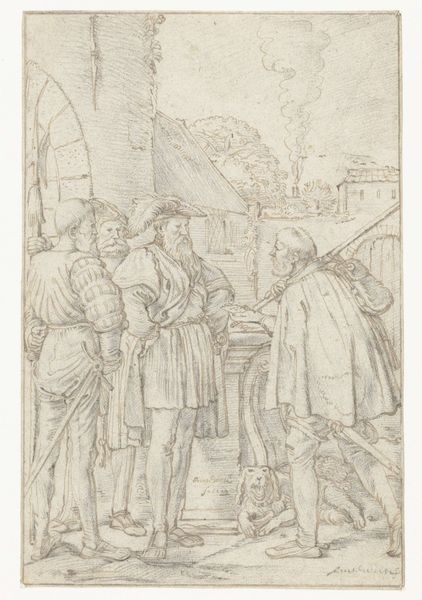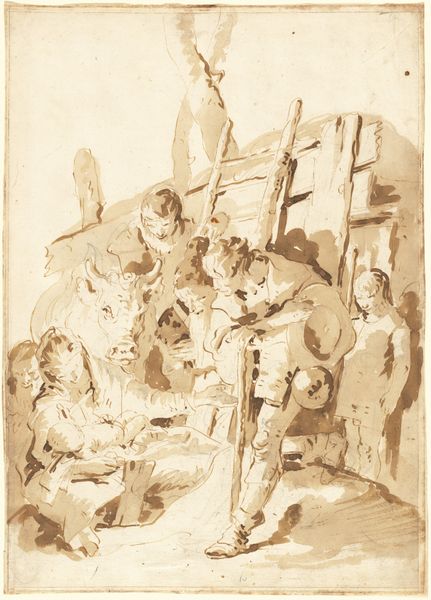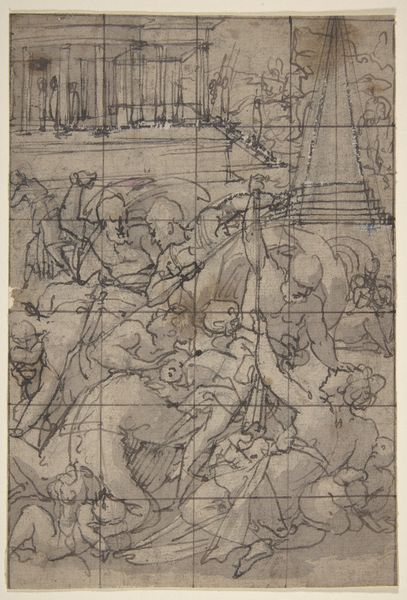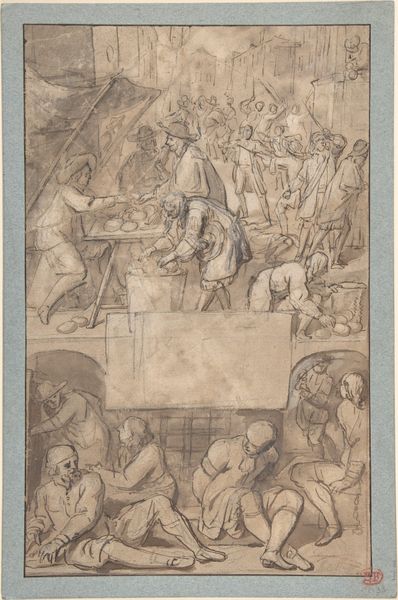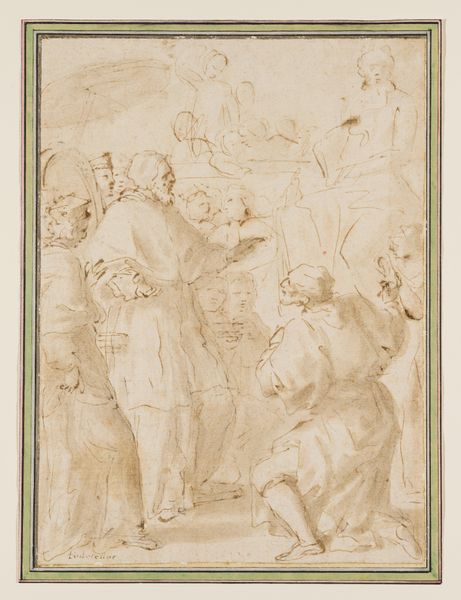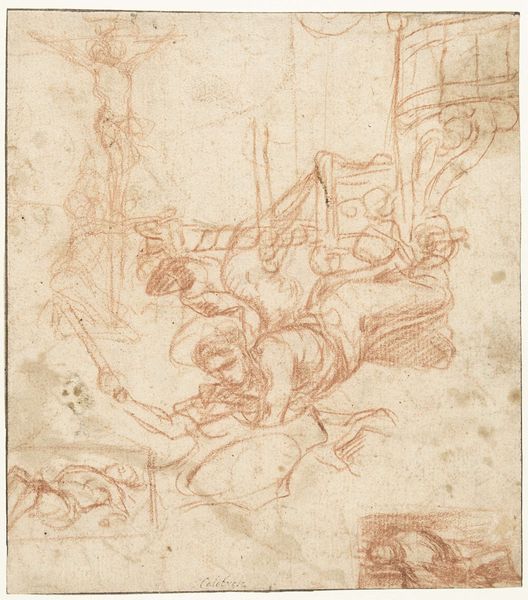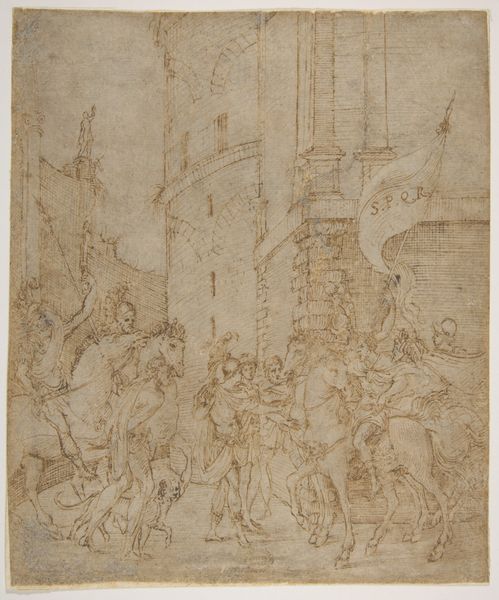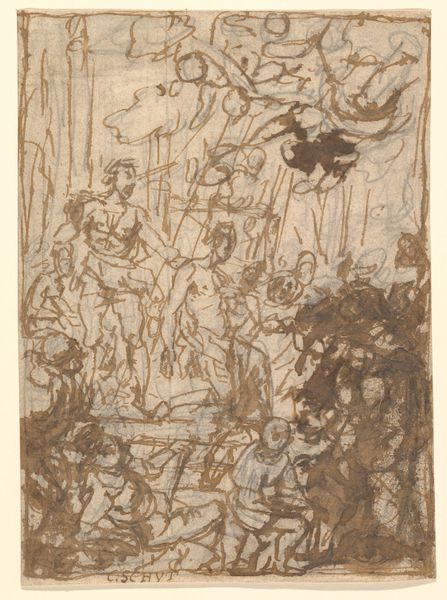
drawing, print
#
drawing
# print
#
landscape
#
figuration
#
11_renaissance
#
history-painting
#
northern-renaissance
Dimensions: sheet: 6 3/4 x 4 13/16 in. (17.1 x 12.2 cm)
Copyright: Public Domain
Editor: This print, "Samson and Delilah," by Albrecht Altdorfer from 1506, depicts a scene from the well-known biblical story. It's a dynamic composition, yet rendered in what looks like a rather humble drawing. What do you see in this piece, especially considering it’s both a print and drawing? Curator: What interests me here is the deliberate emphasis on the *process* of production. We are presented with a landscape dominated by architectural features seemingly etched with meticulous detail, yet created via reproductive technology accessible to wider audiences. How does that challenge traditional notions of artistic value? Editor: That's interesting. So, instead of focusing solely on Altdorfer's skill, you're looking at how printmaking democratizes art and maybe disrupts hierarchies? Curator: Precisely. The medium itself – a print - highlights the art market and economy in the Renaissance, and how artists navigated creating images that could be replicated. What materials were employed in producing the paper, the ink? Whose labor made these materials possible? We should consider also how this impacts Altdorfer’s role within his society. Editor: So, it's not just about the final image, but about understanding art as a product of labor, materials, and market forces? Curator: Yes, and considering Altdorfer also painted, designed woodcuts and engravings, and even served as an architect, it makes one think about his own views on art production and reception. Can we consider drawing now an elevated form? How is its reception changed when mechanically reproduced in prints? Editor: I never really thought about it that way. I was always drawn to the narrative, but focusing on the materials and production adds a whole other dimension. Thank you. Curator: Likewise. I learned from your insightful reading. I never considered what implications such focus on materials had on Altdorfer himself, and it offers us new ideas to reflect upon his role.
Comments
No comments
Be the first to comment and join the conversation on the ultimate creative platform.

